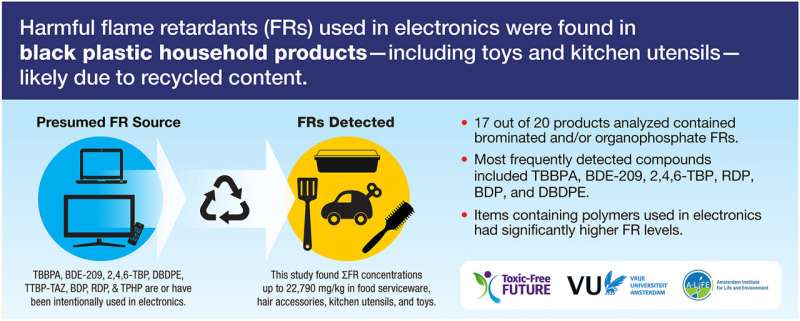Researchers have uncovered the presence of toxic flame retardants in a wide range of common household items, from kitchenware to toys. These chemicals, linked to cancer and hormone disruption, are likely making their way into our homes through poor recycling practices. This discovery highlights the need for greater government and industry action to promote the use of safer materials. Flame retardants and plastic recycling are two critical issues that deserve our attention.

Toxic Chemicals in Our Homes
It turns out that toxic flame retardants are hiding in some of the household items you come into contact with the most — toys, kitchen utensils, food takeout trays. They are also linked to serious health problems such as cancer and developmental issues, with deca-BDE having been banned for over 15 years.
The “presence of these toxic chemicals in our everyday items is alarming,” said lead study author Megan Liu, a student at Harvard University. We had a good idea before we began this study that there is no rationale for flame-retardant chemicals to be present in our food-contact items, kitchen utensils or children’s toys,” Burton said. The findings — detailed in the journal Chemosphere — showed several items were especially heavy with these compounds, to a high of 2.3% by weight.
Nothing Stings Like Recycling Practices
They concluded that dangerous chemicals were making their way into consumer products through bad recycling practices. We know that some electronics companies put really toxic flame retardants in their products, and it seemed pretty plausible that some of that flame-retarded plastic would end up being recycled to become mixtures for consumer goods like toys or kitchen utensils,” said Liu, a science and policy associate at the environmental advocacy group Toxic-Free Future.
The study reveals a particularly troubling finding, since some the most commonly used flame retardants (i.e., PBDEs) have been linked to developmental disruptions in children’s brains and certain cancers. Recently, bromophenols, the PBDE alternatives have been identified as developmental toxicants and shown to cross the placenta and enter breast milk.
What You Can Do To Keep Their Home Secure
Liu has since taken steps to secure her own home in light of these findings. ‘I have since replaced my black plastic kitchen utensils for plastic free wooden or stainless steel ones, ‘she said following the results in this study. I chose reusable glass containers over saving and reusing my black plastic takeout container.
Liu is hopeful that this study, and others like it, demonstrate the need for government intervention or market forces to phase out products. I am trying to make the switch in our household to safe alternatives and I really appreciate the studies like this might be another push for our governments and retailers to act now and change towards safer materials.
It is a stark reminder for all of us to be more considered and thoughtful as to what we are bringing into our homes. Through our collective voice demanding safer materials and choices, we can contribute to a healthier future.
